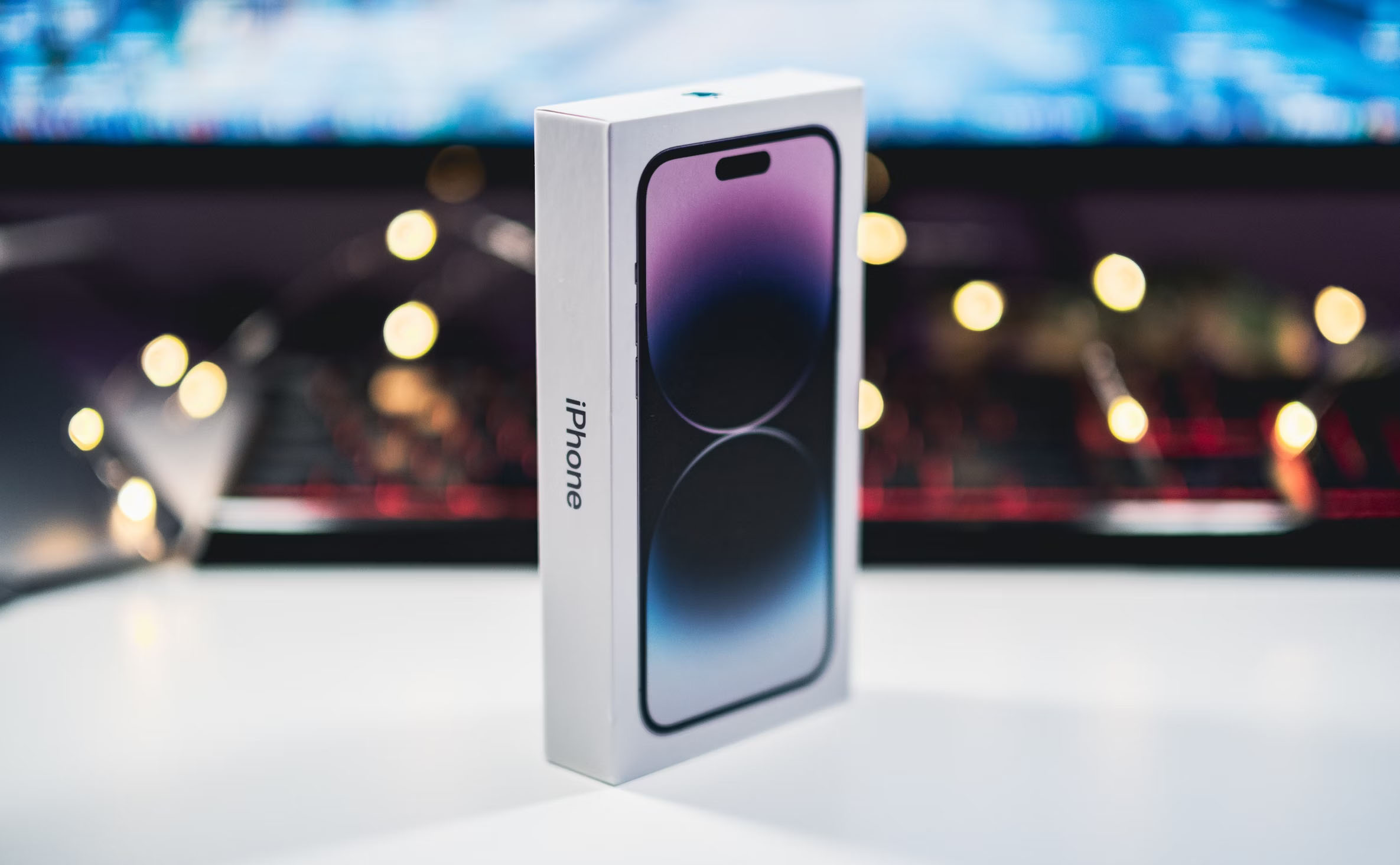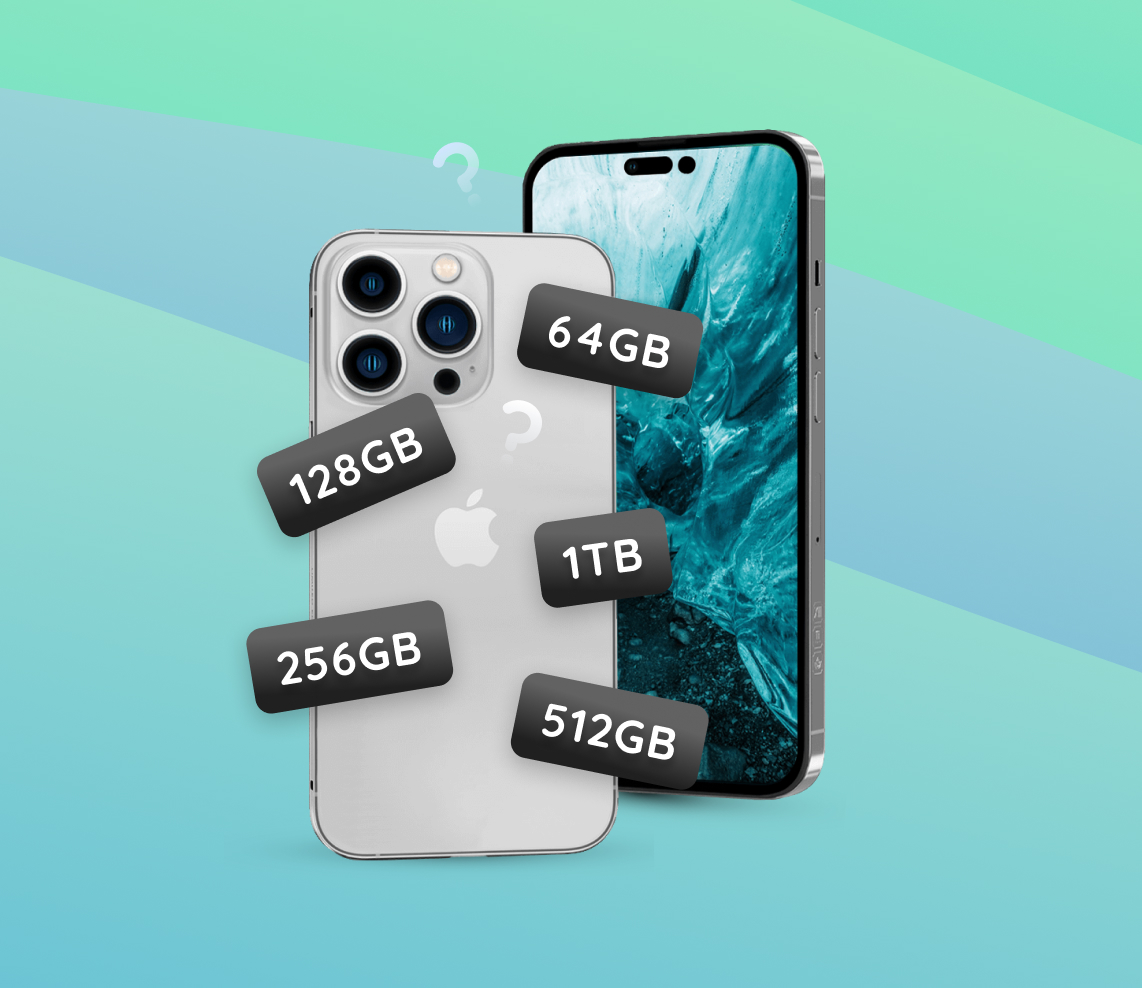When purchasing an iPhone, one of the most common features that must be considered is the amount of storage it should have. Unlike Androids, iPhones do not offer expandable storage such as memory cards. Hence, deleting or transferring some files to a cloud drive must apply whenever your storage becomes full so it can store more data.
However, as the storage capacity of the iPhone increases, so does its cost. Therefore, choosing the right iPhone storage is critical. This article will try to determine which amount of iPhone storage is best suited for your needs.
Tips for Choosing the Right Amount of iPhone Storage
When buying an iPhone, there are storage options to choose from. If you can’t decide how much storage you need, here are some tips.

? How do you use your iPhone?
Being mindful of how you use your iPhone is the first tip. If you’re the type of user who only uses an iPhone for texting and calling, you can get by with a 64GB. But, if you like storing photos, videos, and music, you may need a larger storage. As an example, the typical file size of a single image is 3MB-5MB, a song on Apple Music is around 10MB, a minute of 1080p HD video can take 100MB of your storage.
? What’s your budget?
Whether you like it or not, your budget also plays an important role in selecting the amount of iPhone storage. This is because the bigger its storage, the higher its price will be. For example, an iPhone 12 64GB costs $599, while the 256GB version is $749. So if you need an iPhone with larger storage, be prepared to shell out a few more hundred bucks. Alternatively, you can also pay less for an iPhone and utilize iCloud if you are low on the budget. You can always find a balance between the amount of storage you need and your budget.
?️ Are you a hoarder?
Do you find it hard to delete some files because you think it’s too sentimental to lose? Are you in the habit of recording every moment you are in because it is such a waste if you won’t be able to document it? These are just some signs that you are a hoarder.
Digital hoarders, like material hoarders, have difficulty deleting data, leading them to accumulate numerous files. A larger iPhone storage is perfect if you classify yourself as a hoarder.
⚙️ Do you plan to upgrade soon?
If you are planning to upgrade your iPhone soon, you can consider getting a lower storage capacity. However, if your current iPhone is something that you want to keep for several years, it is recommended to invest in more storage so you can keep all the files in your internal memory space.
A Detailed Comparison of iPhone Storage Options
Still can’t decide how much storage you need? Below, we’ve compiled a detailed comparison of iPhone storage options and their corresponding functionalities.
Understanding the Memory Capacities of Current iPhone Models
Current iPhone models come with upgraded features, one of which is the larger storage capacity. Understanding the function of the storage options can help you decide which you should get when buying an iPhone, regardless of its model.
iPhone 64GB vs 128GB
The 64GB storage option is available only for iPhone 12 and older models. This is the least storage space that Apple can offer, which is enough for basic use such as phone calls, sending messages, and a few apps. As we said in the previous section, your storage will also be determined by how you use your iPhone. We’re not saying that 64GB is not enough, but sooner or later, the average user will run up against the limit.
The latest iPhone models come with a new minimum storage capacity of 128GB. This is a good enough amount of storage for most iPhone users—you can be active on different social media apps, store photos, music, and videos. From a user’s perspective, this is much more convenient since they can now access and save their files locally without relying on iCloud storage.
iPhone 128GB vs 256GB
Even though these two different storage options are the best options for most users, they still have pros and cons. They offer enough storage space for your desired apps and numerous photos and videos, especially those recorded in 4K resolution. If the 128GB iPhone storage is for average users, iPhones with 256GB are perfect for advanced users. These people depend heavily on their iPhones–they browse, record videos, install different apps, play games, and even use them for work.
If we put it in the context of media storage, an iPhone 14 with 128GB can hold up to 22,600 photos, 11,700 songs, and at least 565 minutes of 1080p HD videos or roughly 226 minutes of 4K videos.
On the other hand, purchasing a 256GB of the same iPhone model can store up to 48,200 photos, 25,104 songs, and at least 1,205 minutes of 1080p HD videos or 482 minutes of 4K videos. But of course, 256GB iPhone storage will cost you more than 128GB.
iPhone 256GB vs 512GB
An iPhone with 256GB storage can store enough media for an advanced user. It is also great for future data growth if you plan to keep your iPhone for a few years.
On the other hand, 512GB could be a bit overkill already. If you are a photography professional needing media storage, this option would work best for you.
iPhone 512GB vs 1TB
Both the 512GB and 1TB storage options are for power users. With the 512GB of storage capacity, you can already store a large number of data such as photos, videos, and heavy applications. Meanwhile, if you are a videographer and love to record videos in 4k, you can take around 30 hours worth of videos with 1TB.
Here is the list of available iPhone models for each storage option.
| 64GB | iPhone 12 iPhone 11 iPhone SE iPhone XR and older |
| 128GB | iPhone 14 iPhone 14 Plus iPhone 14 Pro iPhone 14 Pro Max iPhone 13 iPhone 13 Mini iPhone 13 Pro iPhone 13 Pro Max iPhone 12 iPhone 11 iPhone SE iPhone XR |
| 256GB | iPhone 14 iPhone 14 Plus iPhone 14 Pro iPhone 14 Pro Max iPhone 13 iPhone 13 Mini iPhone 13 Pro iPhone 13 Pro Max iPhone 12 iPhone 11 iPhone SE iPhone XR |
| 512GB | iPhone 14 Pro iPhone 14 Pro Max iPhone 13 iPhone 13 Mini iPhone 13 Pro iPhone 13 Pro Max |
| 1TB | iPhone 14 Pro iPhone 14 Pro Max iPhone 13 iPhone 13 Mini iPhone 13 Pro iPhone 13 Pro Max |
How to Deal With Insufficient iPhone Storage Capacity
Storage issues are one of the most common problems encountered when owning an iPhone. Listed below are some of the tips on how to deal with insufficient iPhone storage capacity.
- ❌ Delete old apps and files. The most frequent occupiers in your storage are typically old and unused apps and files, so deleting them will create more available space for your iPhone. You can check which apps take up the most space by going to Settings > General > iPhone Storage. All apps installed on your iPhone will be listed on the page.
- ☁️ Use iCloud storage. iCloud is a cloud storage service offered by Apple to help iPhone users to save their files whenever they run out of space. iCloud is very helpful, especially for those users with only 64GB of storage capacity. You can also share the storage with up to five other family members. Here are the different iCloud plans and its price:
- 50GB: $0.99 per month
- 200GB: $2.99 per month
- 2TB: $9.99 per month
- ? Use external storage. External hard drives are best for storing old photos and videos, but they can be costly. Some of the most reliable brands are Seagate, Western Digital, and Lacie. The storage capacity of the most common hard drives can range from 1TB-5TB, and the pricing will be around $90-$180, depending on the model and the amount of storage.
FAQs
A 64GB phone will be enough depending on your usage. Suppose you only use it for communication such as WhatsApp, Messenger, some social media applications, or for calls and messaging. In that case, you can get a 64GB phone. However, you need a bigger storage capacity if you use it for heavy applications such as online gaming or taking a lot of photos and videos.
If you are a light user, a 64GB iPhone isn’t bad. However, as the new Apple operating system and applications require more storage space, your 64GB iPhone may eventually slow down. However, low storage alone cannot directly impact the iPhone’s performance. Some of the reasons could be a mix of having a lot of apps running in the background, your device is too warm because of extreme conditions, and poor battery health.
For regular users, there is a big difference between 64GB and 128GB. With the 128GB, you can experience more flexibility and bigger storage for your files, videos, music, photos, and applications without worrying about storage cleanup – which the 64GB iPhone storage can’t provide.
Yes, a 128GB iPhone is better than 64GB, but it is also pricier. Nowadays, the apps and iOS for every newly released iPhone keep upgrading. This means that they will consume bigger space. The 128GB iPhone could offer twice as much as the amount of storage 64GB has, making it better to cater to your storage needs as a regular user.
You need more than 128GB if you like storing large video files, or if you love to play heavy-duty mobile games such as console-quality games. Also, 128GB of iPhone storage is recommended if you are a content creator, particularly if you plan to shoot your photos and videos in Apple ProRaw and ProRes formats.
The available storage capacity for iPhone 14 is 128GB, 256GB, 512GB, and 1TB.
When you purchase an iPhone with a specific storage capacity, the pre-installed apps and operating system take up a certain number of storage capacity, reducing the actual amount of usable storage. A new iPhone 256GB can have around 240GB of actual usable storage, taking into account the iOS and the pre-installed Apple apps.
It is also important to note that the latest its model, the higher the operating system it contains. A higher operating system means the higher memory capacity it consumes, making you experience slightly less storage than the actual number of storage advertised.
A 256GB is already sufficient for most iPhone users, but will still depend on your storage needs. If you have an extensive media library, 256GB is recommended.
If you are just an average user, having a 512GB iPhone is unnecessary and a bit expensive. However, if you want to experience top-tier functionality, especially if you are a professional photographer or gamer, a 512GB iPhone is a good buy.
Conclusion
In choosing the most suitable iPhone storage for you, it is important to review your current space usage, your purpose for buying the device with such storage, and the possibilities it could offer you. After all, we all want to make the most of our budget. So, when buying your next iPhone, balance the cost and your desired storage.
